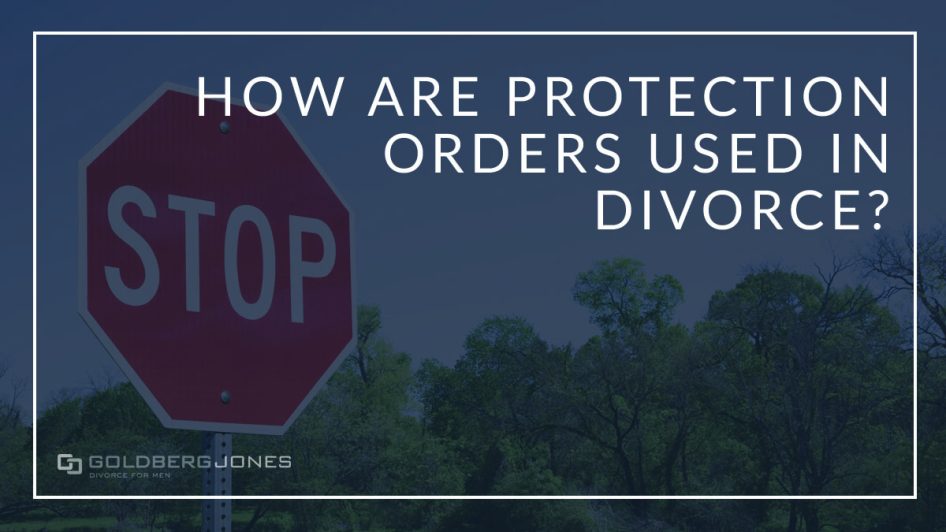It’s not uncommon for divorces to become hot, conflict-riddled affairs. Emotions run high, feelings have often been hurt, and there tends to be a great deal of animosity and ill will.
All too often, threats and domestic violence rear their ugly heads and participants must take steps to keep safe. In Washington, protection orders serve as a legal means of accomplishing this.
Types Of Protection Orders:
In cases where individuals require security from abuse, stalking, or harassment, it’s common to hear talk of restraining orders. This often leads to confusion.
While a restraining order is indeed one type of protection order, there are multiple kinds in Washington. Each carries its particulars and fits specific circumstances, situations, and criteria. These are the most common varieties that apply to family law cases.
Domestic Violence Protection Order
A domestic violence protection order is the most common type and is used to guard against threats and assault.
With various applications, this protection order demands the respondent not threaten or attack you, bars them from entering your home, or compels them to leave a shared residence.
If children figure into the picture, it can award temporary child custody to one parent and schedule a visitation. This protection order can also give you possession of personal property, like the use of a vehicle, and even force the respondent into counseling.
Restraining Orders
Often used as a catchall term for protection orders, restraining orders are a specific variety of protection order.
Most often filed as part of an existing case, like divorce or child custody, restraining orders tend to be broader in scope. Not only can they deal with abuse and domestic violence, they also cover financial concerns like property issues, child support, spousal support, and more.
If you fear your spouse could drain a joint bank account or run up massive credit card bills, a restraining order can block that. Multiple types exist, ranging from a temporary order good for 14 days to longer, even permanent decrees.
No-Contact Order
While restraining orders are part of existing family law cases, a no-contact order is issued during criminal proceedings.
These most often occur in cases of stalking and harassment. They protect victims from contact by their harasser in any form, including in-person, through a third party, and via phone, email, or even social media.
No-contact orders are generally shorter in duration than other protection orders and shield you during an ongoing criminal case. A temporary order lasts 14 days, though the court can set a longer period or extend the safeguard indefinitely.
Anti-harassment Order
Most protection orders revolve around people with existing relationships—spouses, significant others, family members, and the like. A civil anti-harassment order, however, usually applies to cases of harassment that fall outside of those domestic bonds.
For example, this may occur in stranger-on-stranger stalking situations and other types of harassment or a dispute between neighbors.
These protection orders pop up most often in circumstances where a person faces harassment but hasn’t yet been threatened or assaulted. They’re designed to cut off this bad behavior before the situation escalates and becomes dangerous.
Related Reading: What Is A Guardian Ad Litem?
Violating Protection Orders
Violating protection orders comes with significant consequences.
Knowingly and intentionally infringing on most types carries an automatic arrest. Anti-harassment orders are an exception, though if the situation dictates, discretionary arrest remains a possibility in these cases.
From there, the court may levy one of several charges against the offending party. Depending on the specific details and nature of the infraction, these also include potential criminal indictments ranging from a gross misdemeanor to felony assault charges.
Contempt of court is also on the table for violations of most protection orders.
How To Get a Protection Order
Fortunately for people suffering abuse, threats, stalking, and other harassment, it’s relatively straightforward to get a protection order in Washington.
Like most legal matters, you start the process by filling out and filing the appropriate forms. While you can find them at your local courthouse, they’re also available to download online. The more detailed information you provide about your situation, the better.
If you are in imminent danger, you can request an ex parte hearing. These usually happen that day, without notifying the harasser, and a judge may issue a temporary protection order.
In ex parte cases, you may even be able to have the hearing via phone. From there, the respondent must be served—for safety’s sake, don’t try to do it yourself—and you may set a court date for a permanent protection order within two weeks.
Courts issue protection orders for many reasons, but the overall purpose is to guard people against harm. If you have questions about whether or not you need one, consider consulting an attorney.
Related Reading: Dealing With Abuse Allegations

Comments 2
The question a have a pto, and my husban is trying to take the house because he say an not living there.
Author
Hi, Kimberly! That’s a tough question. I passed your contact information along to Ken Alan, our managing attorney. He will reach out to you shortly with a more in-depth answer than we can get into here. Best!